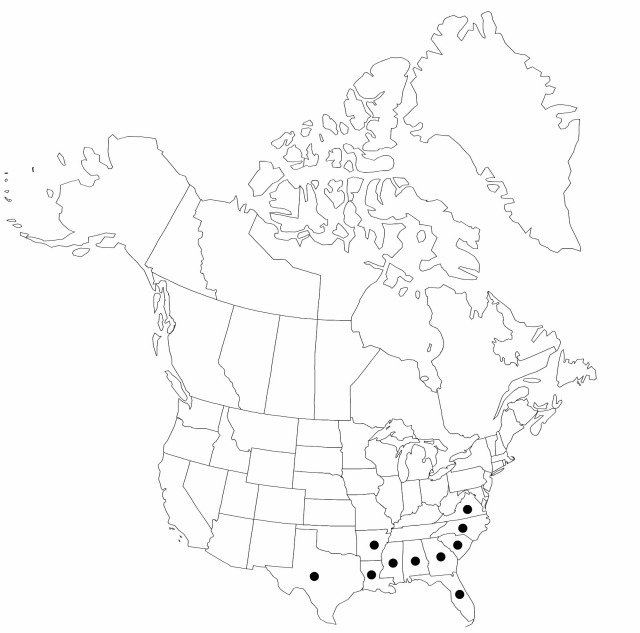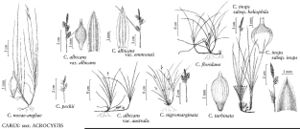Carex albicans var. australis
Sida 14: 133. 1990.
Illustrated
Basionym: Carex varia var. australis L. H. Bailey Bot. Gaz. 17: 153. 1892
Synonyms: Carex emmonsii var. australis (L. H. Bailey) Rettig Carex physorhyncha Liebmann
Rhizomes horizontally spreading, 18–70 mm. Staminate spikes 6–14 × 0.5–1.8 mm; staminate scales 3–4 × 0.9–1.8 mm, midrib weak or strong, usually not reaching apex of scale (rarely prominent, extending to apex of scale, and finely toothed, 15X). Perigynia 2.7–3.1 × 0.8–1.1 mm; beak with apical teeth 0.2–0.4 mm. 2n = 36.
Phenology: Fruiting late Mar–mid May.
Habitat: Dry to mesic, level areas of sandy loam, occasionally on sandy loam-clay mixtures, in partial shade of hardwood or mixed-pine forests
Elevation: 10–200 m
Distribution
Loading map...

Ala., Ark., Fla., Ga., La., Miss., N.C., S.C., Tex., Va., s to c Mexico.
Discussion
Selected References
None.
Lower Taxa
None.
